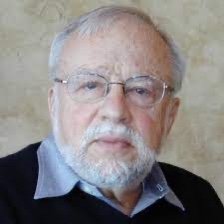BY TOM ABELES

Tom Abeles
When a major river meets a blockage, the river finds a suitable bypass. Similarly, when a major blood vessel in a human has a blockage, it can result in death, or the body finds an alternative path. In either case, the alternative is problematic.
The route down Chicago Avenue in Minneapolis is such a path to handle traffic between Bloomington to downtown Minneapolis. The transit authorities have determined that there is sufficient volume to warrant pouring concrete for a bus-rapid transit line (BRT). That path has hit a blockage at 38th and Chicago due to recent events around the death of George Floyd. A set of bypass alternatives for that north/south route has been created along with an east/west route for the bus line on 38th Street. Until a suitable set of options are found to restore traffic flow, the alternatives are permanent.
The bypasses create a transportation desert which must be traversed by residents during both summer weather and the inclement weather of Minnesota winters. More importantly, it decreases rapid access for fire, police, and other emergency vehicles, reducing the safety in this dead zone, a problem for residents who have been seeking the opposite, a means of increasing the area’s safety.
The city is in the process of negotiating a purchase of the Speedway station on the northwest corner of the 38th and Chicago intersection to own that site for development, which would then allow the displays blocking the intersection to be removed and relocated to that property. There are many steps and questions to realizing this alternative with corresponding times for reaching that goal. This path could take months or even years. What are now temporary alternative routes will become calcified with all the ramifications and concerns of transportation and safety within the dead zone and impact on its residents for their access to public transport along with personal safety and the value of area properties.
As with cardiac blockage, the “surgery” required to realize a solution needs deft and insightful management and, more importantly, the active cooperation of city residents who are affected by these blockages. That implies that the residents of the dead zone are only one group amongseveral with a vested interest in the successful surgery and recovery at that intersection. The parties include residents of the immediate area, residents of the city in general, and groups with specific interests in a memorial for George Floyd as an individual and as an icon for singular issues.
There are major goals that need to be met along the path to a resolution. These include:
1. The acquisition of the Speedway site and the environmental certification.
2. The decision of what type of building(s) will be on the site (to retain or demolish the Speedway building) and the ownership of the asset. The city must retain land ownership.
3. A determination as to who will operate and manage the site, and where the funds to acquire land, finance any development, and finance and manage the activities on the site will come from.
All of these are time and finance-dependent and therefore there is uncertainty over when and how the 38th and Chicago intersection will be reopened and bus routes 23, 5 and the new D-line restored. There are also issues concerning what local, state and federal agencies will be involved. For community voices to be heard, what organizations will have standing to negotiate? If there are third parties to have ownership and managementof the buildings, there are additional issues to be settled, including the voices of the residents impacted by the current situation.






















